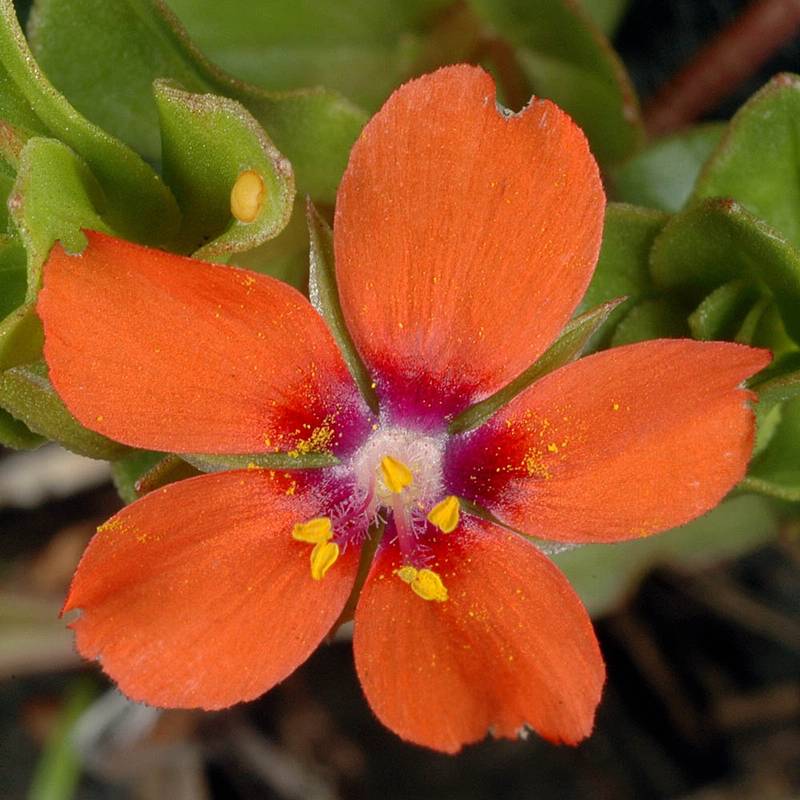Hosted by the University of Washington Herbarium, Burke Museum
Publication: Willdenowia 39(1): 51. 2009.
Origin: Introduced from Eurasia
Herbarium search: CPNWH
Notes: FNA8: "The flowers close on cloudy days and as evening approaches, hence the name weatherglass. P. E. Gibbs and S. Talavera (2001) found that Anagallis arvensis self-pollinates as the petals close.
This is the most variable species of Anagallis, with reddish flowers once thought to be common in more northerly latitudes and blue flowers in southern areas. There are numerous intermediate color forms. The blue form has been the source of confusion in the nomenclature of this taxon. Linnaeus described the blue form of A. arvensis as A. caerulea. Schreber used A. coerulea (note the spelling) as did Lamarck for a related taxon that is now included within A. foemina Miller. Subsequent authors submerged A. caerulea/coerulea into A. arvensis as a forma, variety, or subspecies, incorrectly crediting either Schreber or Lamarck. L. F. Ferguson (1972) distinguished A. foemina Miller (including Schreber\\\'s A. coerulea), which consistently produces blue flowers, as a separate entity differing, in part, by petals having few to no marginal hairs, which, when present, have elongate terminal cells (in A. arvensis the petal margins have numerous gland-tipped, globose hairs), and by having flowering pedicels equaling or shorter than the subtending leaf."
Last updated 5/19/2023 by David Giblin.

